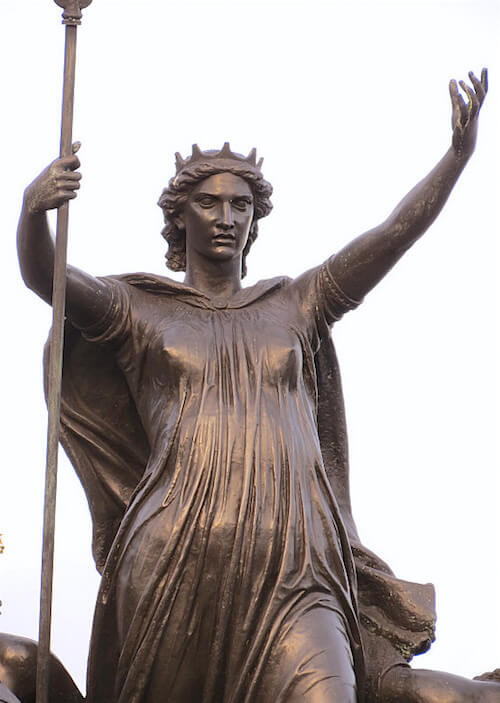It is a fact, universally acknowledged, that the Romans were dicks. And that the Romans, if given an inch, will take your entire hecking country. It's also a fact that the Romans had very little respect for the traditions of the lands that they conquered, so is it really a surprise that in 60 CE the fiery Queen Boudicca had to take the Romans to task?
 |
| There are no surviving pictures of the queen, but this statue of her stands on the banks of the Thames near the Houses of Parliament |
Boudicca was queen of the Iceni, a tribe of Britons living in what is now modern Norfolk. Her husband, Prasutagus, was a client king under the Romans, a sort of half ally-half subject, and when he died he left half of his stuff to his daughters--Isolda and Siora--and the other half to Emperor Nero. The Romans, who didn't believe in letting women inherit property*, gave the Iceni the middle finger, and took everything that Prasutagus left behind, as well as the lands and possessions of several other members of the British nobility. When Boudicca protested the Romans had her flogged and her daughters raped to put them in their place. Big mistake.
As you might imagine, Boudicca was a little pissed off, and so she rallied not only her own forces, but also the forces of the Trinovantes of the south, as well as other local tribes. Army behind her, Boudicca decided to take on the Roman Empire.
She chose an advantageous time to attack. The Roman governor, Gaius Suetonius Paullinus was off fighting the Welsh when Boudicca led her troops south. They took the cities of Camulodunam (Colchester), Londinium (London), and Verulamium (St. Albans), looting and putting the entire population to the sword.
This, as you might imagine, freaked out the defending Romans just a bit. Most of the legions were off in Wales, and the Romans were spread thin. Not only that, but the Iceni were brutal. Cassius Dio, one of the two surviving primary sources from Boudicca's rebellion, wrote of the Iceni gathering the noble ladies of the city, stripping them naked, hanging them, cutting off their breasts, sewing said breasts to their mouths, then driving a spear through them all kebab style. According to Dio, this didn't phase the Iceni at all. So you can understand why Paullinus was a bit worried when he got back.
 |
| Dio described her as being tall, with a flinty gaze, a loud voice, and waist-length red hair |
Even with Paullinus' forces returned from Wales, the Iceni still outnumbered the Romans by quite a lot, so Paullinus chose to engage the tribes in a narrow area where their greater numbers would be a disadvantage. The overconfident Iceni cut off their own escape route with wagons, and could not flee when the Romans fell on them. The Romans slaughtered every Briton they could, but Boudicca and her daughters escaped.
However, Boudicca refused to be taken captive by the Romans. She and her daughters drank poison, and died shortly after the battle.
Boudicca was a smart and fearless woman. She managed to unite groups of Britons who traditionally did not work well together, and led them into battle personally. That she was a woman greatly embarrassed the Romans, who couldn't conceive that a female could lead. Though her rebellion failed the Romans let up on some of their restrictions; they'd seen what the Britons could do when angered.
*If you had to be a woman in the ancient world, it was pretty good to be a Briton. Women were not only allowed to inherit, but were educated, trained as warriors, and enjoyed more protections under law than their counterparts in the rest of Europe. The Romans, who treated their women abysmally, couldn't quite wrap their heads around this.
Sources




